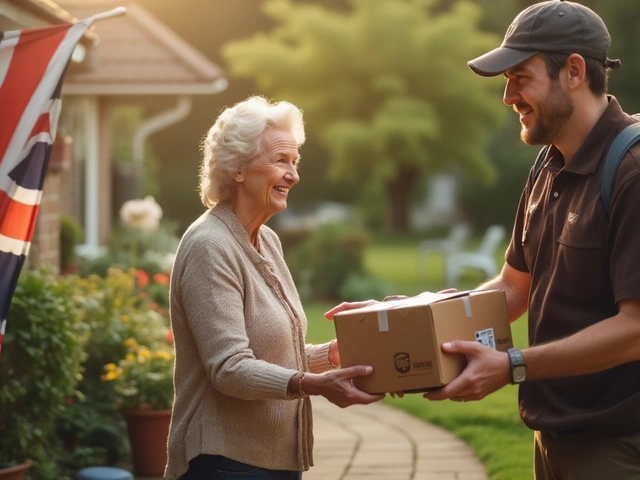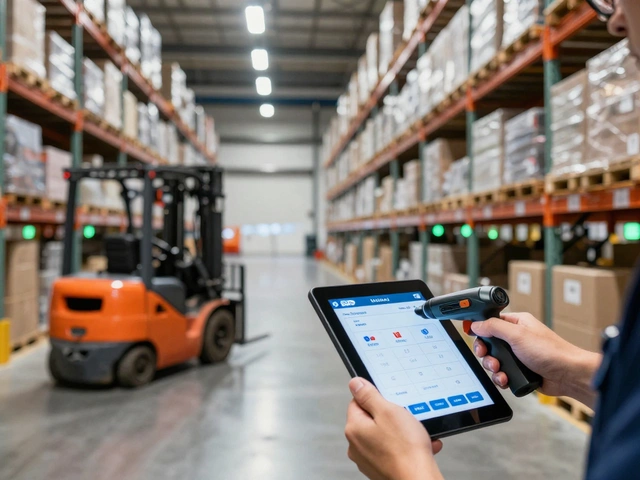Online Store Logistics: Real‑World Shipping Tips You Can Use Today
If you run an online store, the biggest headache is often getting products from your shelves to a happy customer’s door. You don’t need a PhD in supply chain to sort it out—just a clear plan, the right tools, and a few insider tricks. Below you’ll find the most useful advice pulled from our top articles, all aimed at cutting costs, speeding delivery, and keeping returns simple.
Choose the Right Courier and Cut the Cost
Courier rates can feel like a guessing game. Start by comparing the three big players—UPS, FedEx, and USPS—because each has a sweet spot. For example, UPS often wins on overnight reliability, while USPS can be cheaper for lightweight parcels that don’t need next‑day speed. Use our UPS 5lb Shipping Cost Guide to see exact numbers and discover tips like bundling packages or using flat‑rate boxes to shave off dollars.
Don’t forget about cutoff times. Missing a FedEx overnight deadline can add a full day's delay and extra fees. Check the latest cut‑off schedules (FedEx Overnight Cutoff Times) and plan your packing routine around them. A small tweak—dropping shipments a few minutes earlier—can save a lot of stress.
Streamline Warehouse Operations with the Right WMS
A good Warehouse Management System (WMS) is like a traffic controller for your inventory. It tells you where every SKU lives, when to reorder, and how to pick items efficiently. Our guide on Types of Warehouse Management Systems breaks down the four main models, from basic spreadsheet‑style tools to AI‑powered automation. Pick a system that matches your order volume; a small boutique store may only need a simple WMS, while a fast‑growing shop should invest in a feature‑rich platform that scales.
Integrating your WMS with an e‑commerce platform (Shopify, WooCommerce, etc.) lets you sync stock levels in real time, preventing overselling and the dreaded “out‑of‑stock” email after a customer has already paid. The result? Fewer returns, happier buyers, and smoother operations.
Lastly, think about the ‘last mile’—the final stretch from your local depot to the customer’s front door. This stage is where most delays happen. Our article on Understanding Last Mile Delivery Risks explains common pitfalls like missed cut‑offs, traffic snarls, and failed address verification. Simple steps—like confirming addresses at checkout and offering delivery windows—can dramatically improve on‑time rates.
Running an online store isn’t just about great products; it’s about getting them there fast and cheap. By picking the right courier, respecting cutoff times, and using a WMS that fits your scale, you’ll see fewer headaches and more five‑star reviews. Dive into the linked guides for deep dives, templates, and checklists that make each step easy to follow. Happy selling!
October 30, 2025
Evelyn Wescott
0 Comments
Learn how to start e-commerce from scratch with practical steps on choosing products, setting up your store, handling shipping, and building trust. Avoid common mistakes and focus on logistics that make customers come back.
June 14, 2025
Evelyn Wescott
0 Comments
Ever wondered if dropshipping and e-commerce are pretty much the same thing? This article clears up the confusion and explains how each model really works, especially when it comes to logistics and handling orders. You'll get to see the pros and cons up close, and learn which model fits better for different needs. Useful facts, real tips, and simple explanations make it easy to understand. Perfect for anyone curious about starting an online store or tweaking their shipping process.
April 21, 2025
Evelyn Wescott
0 Comments
Thinking of starting an eCommerce business but your bank account’s looking bleak? No problem—there are real workarounds that don’t require you to shell out tons of cash up front. This article breaks down exactly how you can launch an online store from scratch, even if you’re starting with nothing. From free platforms to clever logistics tricks, we’ll dig into the details most guides skip. Prepare for honest talk about the challenges and super practical solutions that work in 2025.






